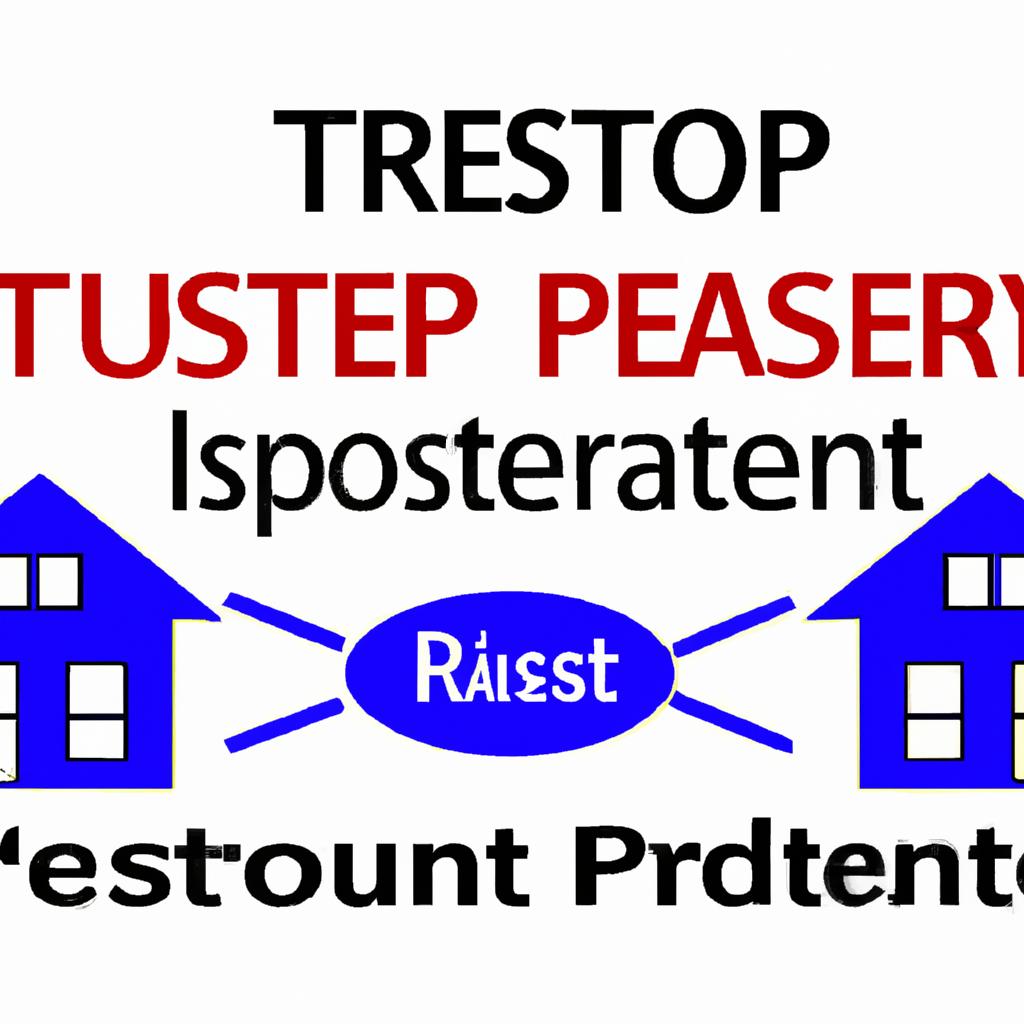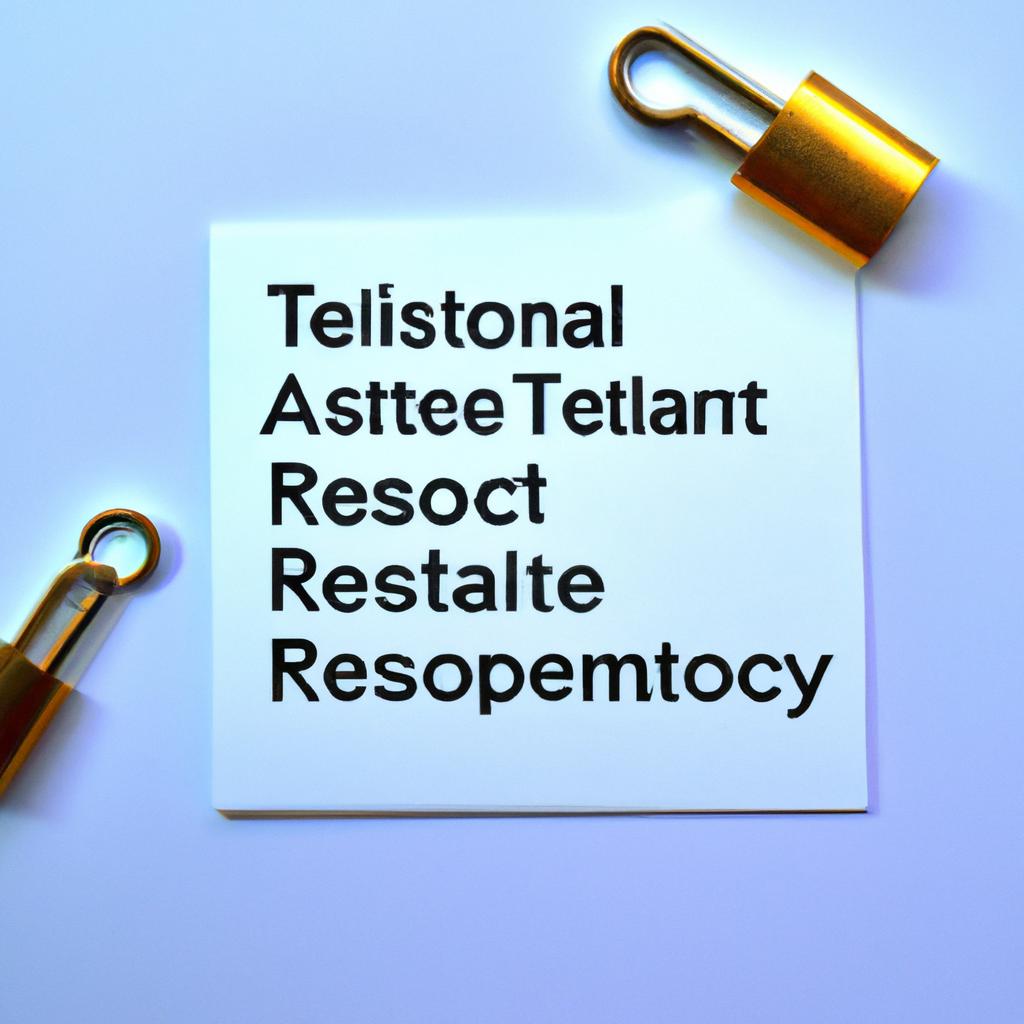In the ever-evolving landscape of real estate investing, safeguarding your assets has never been more crucial. Enter the real estate asset protection trust – a powerful tool utilized by savvy investors to shield their properties from potential risks and liabilities. At Morgan Legal Group, based in the heart of New York City, we specialize in navigating the complexities of estate planning, offering expert counsel on the intricacies of establishing and maintaining these invaluable trusts. Join us as we delve into the realm of real estate asset protection trusts and discover how they can secure your investments for generations to come.
Understanding the Purpose of Real Estate Asset Protection Trusts
Real estate asset protection trusts are a powerful tool to safeguard your valuable properties from potential risks and liabilities. By transferring ownership of your real estate assets into a trust, you can create a legal barrier that shields them from creditors, lawsuits, and other unforeseen events. This can provide you with peace of mind knowing that your properties are protected and secure.
One of the key benefits of real estate asset protection trusts is their flexibility. Trusts can be tailored to suit your specific needs and goals, allowing you to designate beneficiaries, outline distribution instructions, and designate a trustee to manage the assets on your behalf. Additionally, trusts can help streamline the probate process, ensuring a smoother and more efficient transfer of assets to your loved ones. With the guidance of an experienced attorney, you can navigate the complexities of estate planning and create a solid foundation for the future protection of your real estate assets.

Key Features and Benefits of Real Estate Asset Protection Trusts
Protection Against Creditors: Real Estate Asset Protection Trusts provide a layer of protection for your real estate assets against potential creditors. This can help safeguard your investments and provide peace of mind knowing that your properties are shielded from legal claims.
Privacy and Confidentiality: By establishing a Real Estate Asset Protection Trust, you can maintain a level of privacy and confidentiality regarding your real estate holdings. This can help prevent unwanted attention and inquiries into your assets, allowing you to keep your affairs private.

Strategies for Implementing and Maintaining Real Estate Asset Protection Trusts
When it comes to protecting your real estate assets, implementing and maintaining a real estate asset protection trust can be a powerful tool. By establishing a trust, you can shield your properties from creditors, lawsuits, and other potential threats. However, it’s crucial to have a solid strategy in place to ensure that your trust is effective and continues to provide the protection you need.
One key strategy is to carefully select the assets that will be included in the trust. This may involve conducting a comprehensive inventory of your real estate holdings and determining which properties are most vulnerable to risk. Additionally, regularly reviewing and updating the trust documents is essential to ensure that they accurately reflect your current assets and circumstances. By staying proactive and diligent in your approach, you can maximize the benefits of your real estate asset protection trust and safeguard your properties for the long term.

Considerations When Choosing a Trustee for Your Real Estate Asset Protection Trust
When selecting a trustee for your real estate asset protection trust, it is essential to carefully consider several key factors. Trustee selection is a crucial decision that can greatly impact the success and effectiveness of your trust in protecting your real estate assets. Here are some considerations to keep in mind:
**Trustee Qualifications:** Ensure that the trustee you choose possesses the necessary knowledge, experience, and expertise to effectively manage a real estate asset protection trust. Look for someone with a background in real estate law, finance, or asset protection.
**Trustee Reliability:** Select a trustee who is trustworthy, reliable, and capable of fulfilling their fiduciary duties. It is crucial to choose someone who will act in the best interests of the trust beneficiaries and adhere to the terms of the trust agreement.
Q&A
Q: What is a real estate asset protection trust?
A: A real estate asset protection trust is a legal arrangement that allows individuals to protect their real estate assets from creditors and legal claims.
Q: How does a real estate asset protection trust work?
A: By transferring ownership of real estate properties to the trust, individuals can shield their assets from potential lawsuits and creditors. The trust acts as a protective barrier, making it more challenging for creditors to seize the properties.
Q: Are there any benefits to using a real estate asset protection trust?
A: Yes, there are several benefits. These trusts can help safeguard assets from lawsuits, divorce settlements, and other legal liabilities. They also provide privacy and control over property management and distribution.
Q: Are there any drawbacks to setting up a real estate asset protection trust?
A: Setting up a trust can be a complex and costly process. Additionally, it may limit the individual’s ability to sell or transfer the properties held in the trust freely.
Q: Who can benefit from a real estate asset protection trust?
A: Individuals with significant real estate holdings, business owners, and individuals at risk of lawsuits or legal actions can benefit from setting up a real estate asset protection trust.
Q: How can one establish a real estate asset protection trust?
A: To establish a real estate asset protection trust, individuals must work with an experienced estate planning attorney to draft the necessary legal documents and transfer ownership of their properties to the trust. It is essential to follow all legal requirements to ensure the trust is valid and effective in protecting assets.
Final Thoughts
In conclusion, a real estate asset protection trust can be a valuable tool for safeguarding your property and assets from unforeseen circumstances. By establishing this trust, you can provide yourself with peace of mind knowing that your real estate investments are protected for the future. If you are considering implementing an asset protection strategy, be sure to consult with a legal professional who can guide you through the process and help you secure your financial future. Thank you for reading!
 Remember to cite any sources used.
Remember to cite any sources used.
For many individuals and families, buying a home is one of the biggest investments they will make in their lifetime. It provides a sense of stability and security, as well as the potential for financial growth. However, with any significant investment, there is always a risk of loss or unforeseen events. That is where a real estate asset protection trust (REAPT) comes into play. In this article, we will explore what a REAPT is, how it works, and the benefits it offers for protecting your real estate assets.
What is a Real Estate Asset Protection Trust?
A real estate asset protection trust, also known as a land trust or a REAPT, is a legal entity that holds title to real estate assets. It is created by a trust agreement, in which the property owner – known as the grantor – transfers legal ownership of the property to the trust. The grantor retains beneficial ownership of the property, meaning they still have the right to use and benefit from it. A trustee is responsible for managing and maintaining the trust and its assets for the benefit of the beneficiaries – the individuals or entities designated to receive the trust’s assets.
How does a REAPT work?
A REAPT’s primary purpose is to protect the property owner’s assets from potential legal claims or liabilities. By transferring the property to the trust, the grantor’s personal assets are shielded from any potential legal action or seizure related to the property. This means that in the event of a lawsuit, the trust’s assets are separate from the grantor’s personal assets and are not at risk.
Additionally, REAPTs offer privacy protection since the trust agreement is not a public record. Only the trustee’s name is registered as the owner of the property, providing an extra layer of anonymity for the beneficiaries.
Benefits of a Real Estate Asset Protection Trust
There are several benefits to setting up a REAPT for your real estate assets, including:
1. Asset Protection
As mentioned earlier, a REAPT provides asset protection for the property owner. By separating the property from the grantor’s personal assets, it shields the property from potential creditors or legal claims. This can be especially beneficial for real estate investors who own multiple properties.
2. Estate Planning
In addition to protecting assets from potential legal claims, a REAPT can also be used as part of an estate plan. By setting up a trust, the grantor can ensure their real estate assets are distributed according to their wishes upon their death. This allows for a smoother transition of assets and can help avoid any potential disputes or challenges from heirs.
3. Tax Savings
Another significant benefit of a REAPT is the potential tax savings it offers. By transferring the property to the trust, the grantor is no longer the legal owner, and therefore, the property is not subject to estate taxes. Additionally, since the trust is a separate entity, it may also be eligible for its tax deductions.
4. Versatility
REAPTs are versatile in the sense that they can hold various types of real estate assets, from residential properties to commercial properties, and even raw land. This makes it a beneficial tool for individuals with diverse real estate investments.
Practical Tips for Setting Up a REAPT
1. Consult a Professional
Setting up a REAPT requires careful legal and financial considerations. It is essential to consult a professional, such as a trust and estate attorney, to ensure the trust is set up correctly and meets your specific needs and goals.
2. Consider Your Goals
Before setting up a REAPT, it is crucial to consider your goals and objectives. This will help you determine who the beneficiaries should be and how the trust should be structured.
3. Select a Trustee Carefully
The trustee plays a crucial role in managing and maintaining the trust and its assets. It is essential to choose someone you trust and who has experience in managing real estate assets.
Real Estate Asset Protection Trust Case Study
Let’s consider a real-life example of how a REAPT can provide asset protection. John is a real estate investor with multiple properties and a successful rental business. However, one of his tenants sues him for injuries sustained on one of his rental properties. Since John has all his properties in a REAPT, his personal assets are protected, and the court can only go after the trust’s assets, eliminating the risk of losing his other properties or personal assets.
In Conclusion
A REAPT is an effective tool for protecting real estate assets from potential legal claims or liabilities. It offers privacy and tax-saving benefits and can also be used as part of an estate plan. However, it is essential to consult a professional before setting up a REAPT and carefully consider your goals and objectives. With proper planning and structuring, a real estate asset protection trust can provide peace of mind and protect your hard-earned assets.





